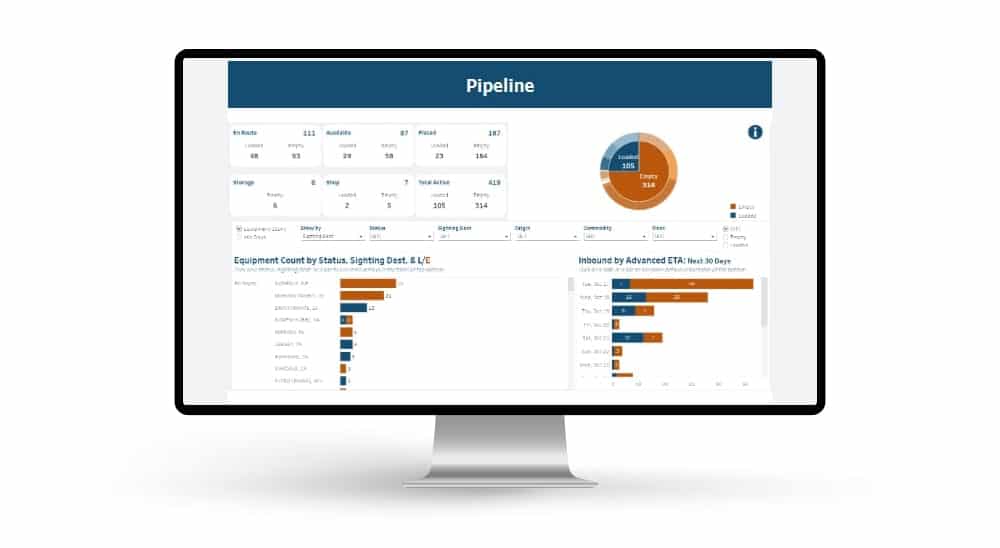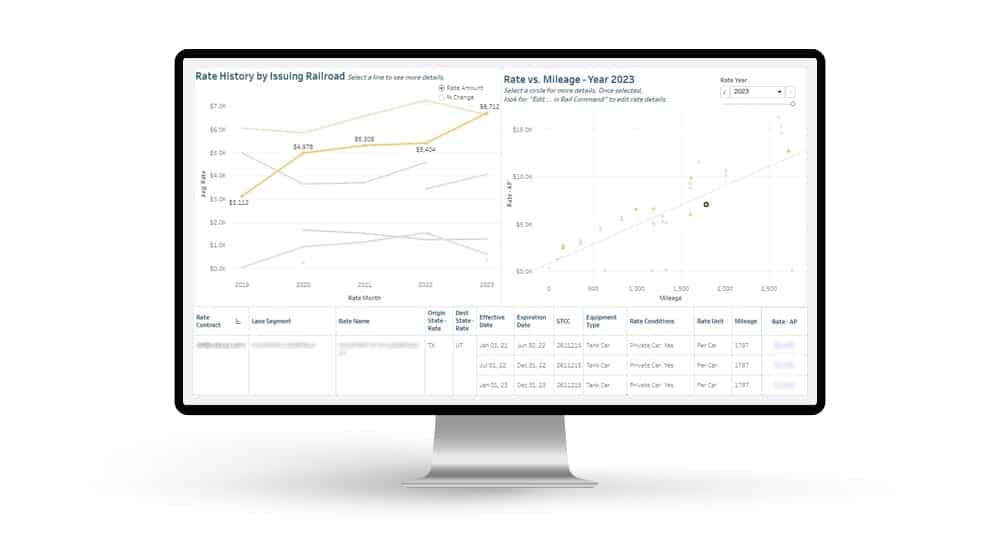Are the railroads telling you they want Through Rates converted to Rule 11? If so, that’s a good thing. Rule 11 railroad rates can give you better pricing visibility and transparency across your routes. With the right information, preparation, and negotiating strategy, you may be able to reduce your rail spend overall. Here’s how.
What is Rule 11?
According to the Association of American Railroads, “Freight Mandatory Rule 11 is intended for use by the rail industry to protect confidential prices and/or meet customer requirements by providing multiple freight bills on shipments covered by a through Bill of Lading.”
Rule 11 provides directions and responsibilities of shippers and carriers when working with multiple carriers in a route.
Shippers are not required to exercise Rule 11 railroad rates, but they do have the option when multiple carriers are involved in a route. Some shippers prefer to use Through Rates to simplify the payment process. However, this can leave money on the table.
Rule 11 Railroad Rates vs Through Rates
First, it’s important to understand the key differences between Rule 11 railroad rates and Through Rates. A Through Rate is one rate that covers all railroads in a multi-railroad shipment. For example, moving from the west coast to the east, you’d pay one rate to the origin carrier, who is then responsible for paying any other railroad(s) in the movement. Through Rates tend to reduce administrative burdens, though they don’t offer you much information about how much you’re actually paying.
Rule 11 rates, on the other hand, involve the independent negotiating and billing with each railroad in a joint movement. The shipper works directly with each carrier in setting up, billing, and paying that railroad’s portion. Sound like more work? Perhaps, but the benefits can far outweigh the costs.
Benefits of Rule 11 Railroad Rates
The major benefit of Rule 11 is that all rail rates are transparent, which can increase the leverage that a shipper has. Instead of negotiating with a single carrier on a rate, you can negotiate with each carrier involved. With a Through Rate arrangement, your origin carrier might be able to negotiate with other carriers to receive a substantially lower rate overall. However, the origin carrier has little incentive to pass these savings along to you. Since you aren’t aware of these negotiations, your price will likely stay the same, while the origin carrier enjoys higher revenue on their portion of the movement. With Rule 11 railroad rates, you can negotiate with each carrier along the route and take the savings yourself. Even if you’re only able to negotiate with a few carriers, you may receive a lower overall rate.
Take, for example, a movement from Houston, TX to Philadelphia, PA originating on the UP. If you negotiate a Through Rate with the UP to move via the New Orleans interchange to the NS, you don’t know how much the UP vs. the NS is receiving. Who’s providing a reasonable rate and who may be putting you at a competitive disadvantage? What if your facility is captive to the UP, but the receiver is open to the NS and the CSX? Is the UP taking more than its fair share? How do you know that you are being afforded the best opportunity to leverage one destination carrier against the other?
Rule 11 rates can provide:
- Rate visibility
- Increased options
- Negotiation leverage
- Rail spend reductions
How to Leverage Rule 11 Rates
The first step in taking advantage of Rule 11 railroad rates is talking to your origin carrier and requiring invoices from each carrier along the route. With individual invoices, you have a point of comparison. First, you can compare the rates to the miles. Is one carrier charging significantly more than another across a similar distance? This is a good place to start.
With your individual carrier invoices, the next step is comparing your rates to the market. By utilizing publicly available tariff rates and contract rate estimates based on variable costs, you’ll have a starting place for negotiating rates. Use this information to further narrow down your biggest opportunities, determine where your rates are highest compared to competitors, and develop a negotiation strategy. In your negotiations, be sure to demonstrate that you are a valuable shipping customer with records of timely payments and an organized rail shipping system.
In some cases, you may not have the time, technology, or information that you need to negotiate on individual Rule 11 railroad rates. In this case, instead of leaving money on the table and leaving your rates to your origin carrier, work with rail logistics experts. RSI Logistics is here to help shippers understand railroad pricing and reduce their rail spend. Rule 11 rates may open the opportunity for savings that you didn’t know were possible. Contact us to find out how our analysis software, coupled with our expertise in rail rate negotiations, can help you achieve substantial benefits.




 Automated exception reporting of the railcar tracking data makes it easy to identify and troubleshoot jeopardized shipments, thereby enabling you to provide better service to your stakeholders.
Automated exception reporting of the railcar tracking data makes it easy to identify and troubleshoot jeopardized shipments, thereby enabling you to provide better service to your stakeholders. Receive notification of pending rate expirations. Tariff changes and fuel surcharges can be automatically updated.
Receive notification of pending rate expirations. Tariff changes and fuel surcharges can be automatically updated.